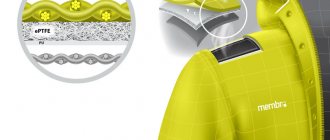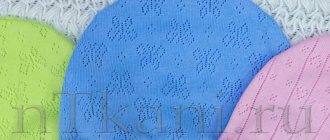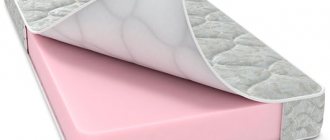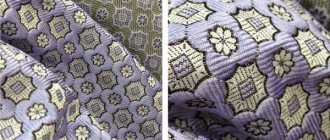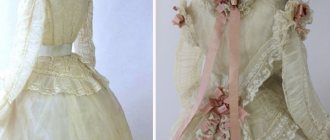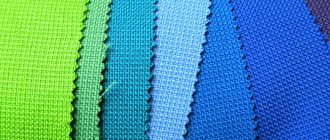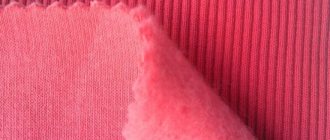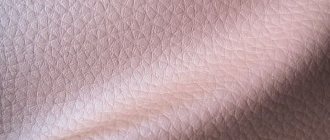Modal is an environmentally friendly and safe fabric, which in its properties is in no way inferior to cotton, and even has a number of additional positive characteristics. It is a soft and plastic fabric obtained artificially based on beech or eucalyptus cellulose.
“The high wet modulus values make modal fabric resistant to shrinkage and stretching. In addition, modal is characterized by softness, smoothness and resistance to fading, as well as high absorption rates. A modal-cotton blend can be used to produce towels, bathrobes and bath mats.” Wikipedia
Composition of modal
Many manufacturers classify the material as both synthetic and natural fabrics. This is due to the special production technology, as well as the fact that the composition of modal is 100% plant raw materials. Today you can find pure fiber, as well as mixed options. Cotton is usually added to them. And the percentage of components is 50 to 50.
Compound
To better understand what kind of fabric modal is, it’s worth talking in more detail about its composition. Many people do not understand which group of materials it belongs to - natural or artificial. Cellulose is used to make this fabric. Manufacturers try to use raw materials of noble species - ash, pine, eucalyptus.
To obtain filaments from cellulose, it is passed through a spinneret. Then it is treated with special substances that improve its performance parameters. After all the stages, the output is light and strong threads, which form the basis of the future fabric.
Manufacturers claim that modal is a 100 percent environmentally friendly material, so now, when all of humanity is concerned about the environment, it is especially popular. Due to the processing of cellulose with special substances, the material is considered semi-natural. To increase the strength of modal fibers, natural threads are used - linen, cotton or silk.
This fabric is called an improved synthetic alternative to natural fabrics.
The substances used for processing do not contain harmful impurities, and its strength is higher than that of plant materials.
History of modal
This fabric first appeared in Japan. Scientists set out to create an artificial material that resembled cotton in its characteristics. And they succeeded in this during an experiment with viscose in 1951. The raw material for modal was eucalyptus tree cellulose.
At first the fabric was called “polinosic”, and after migrating to Austria, it became known as “modal”. Today, mass production has also reached Australia, which has large reserves of eucalyptus.
Currently, modal fabric is used for tailoring. In addition, this material makes quite high-quality and practical tracksuits. Maternity clothes and underwear are also made from the material. Modal is ideal for sewing bed linen, it’s pleasant to sleep on, you won’t sweat or freeze in such a bed, these are extremely high-quality products that will last for many years and provide only positive emotions.
Application
Modal is a fabric that can itself be used for the manufacture of bed linen, home and sportswear, but the qualities of the fiber are best demonstrated in mixed versions, for example with cotton. Combining perfectly with other fibers, modal improves their positive characteristics. Products made from such fabrics do not wrinkle, retain the uniformity and elasticity of the structure even after prolonged use, they are soft, velvety to the touch and cause a pleasant sensation when touched. Modal has the property of slightly cooling the skin, which is especially valuable for bedding in the summer heat. The fabrics are ideal for service, home and hotel textiles: bedspreads, bath sheets, towels, bathrobes, bath mats, bags for hygiene and bath accessories, etc. In addition, modal is often used in the manufacture of hosiery, which, due to the presence of this fiber, have excellent hygienic characteristics.
Modal fabric is often found in underwear , bedding, and towels. In general, this material is an excellent alternative to cotton items, which means it can be used for the same purposes.
The properties and performance characteristics of the material make it possible to use modal for the production of:
home clothes (pajamas, dressing gowns);
sportswear (T-shirts, T-shirts, tights)
underwear and hosiery;
home textiles (towels, bedding , napkins);
clothes (blouses, dresses, skirts);
In addition, modal fiber is an excellent companion and is often used to produce blended fabrics. In combination with natural fibers, it enhances their characteristics, ultimately improving the quality of the resulting fabric.
Advantages of modal fabric
The fabric does not shrink when washed, repels dirt well, and is also easy to dye in any color. The material does not accumulate static electricity and is highly breathable, but quickly absorbs moisture.
Unlike its analogues, modala practically does not wrinkle and completely absorbs moisture. Other advantages of the fabric are:
- hygiene (this material does not cause any discomfort even during everyday wear)
- the fabric is highly breathable;
- pleasant tactile qualities (the material is in good contact with the human body, thus creating maximum convenience and comfort)
- a wide range (today you can find a wide variety of styles, as well as design and color of the product. This makes the choice much easier, so you can choose the ideal option that will be successfully combined with other clothes
- the material does not emit any toxic substances or unpleasant odors (constant wear did not bring any discomfort)
- wear resistance (this fabric resists various external influences well, the material is designed for heavy loads, so frequent use does not affect the original appearance of clothes made from this fabric)
Advantages and disadvantages
Despite their synthetic origin, modal products have the following positive properties:
- even bulky items remain light and soft;
- significant hygroscopicity - the material absorbs more moisture than natural material;
- high tensile strength;
- breathability - products allow air to pass through well, allowing the skin to breathe;
- low creasing;
- environmentally friendly and hygienic - there are no toxic components in the composition;
- absence of deformation and shrinkage during wear and after washing - knees do not stretch out on sportswear and tights;
- does not pill and does not rub off due to prolonged use;
- pronounced dirt-repellent properties - no soaking required;
- color fastness and lack of fading and fading;
- The material is attractive in appearance, reminiscent of silk, but with a matte sheen.
You might be interested in What is technical felt: characteristics of a sheet building material
The disadvantage is possible allergic skin rashes. These products are not suitable for people with sensitive skin. In addition, the fabric is flammable. Close proximity to an open flame increases the risk of fire.
Modal production
The leading countries for fabric production are Australia, Russia, Italy and China. The basis for making fabric is cellulose. In order for it to become fiber, it is subjected to special processing, which consists of the following stages: at the preparatory stage, the wood is dried and crushed; the resulting raw material is passed through a press and then dipped into a special composition, adding dyes; at the final stage, the threads are washed in a soapy solution and then dried.
“To obtain modal, a solution of sodium cellulose xanthate is immersed in rotating jars without zinc and low acid content. Thanks to the short immersion time, coagulation and material elongation occur simultaneously. Subsequent restoration allows us to obtain a fine-fibrous structure.” Wikipedia
What is modal
Modal is a semi-synthetic, high-quality material, which in many respects is not inferior to natural fabrics. It is often called improved viscose, since the materials have the same base.
From the 30s to the 50s, modal was used only for industrial purposes. In the middle of the last century, the Japanese began to use innovative fabric for sewing clothes, and in the 60s the Austrians became interested in the fabric. Now manufacturers from around the world are working with the material.
Modal is one of the improved varieties of viscose. To make fibers for fabric, pine and eucalyptus shavings are used, which are treated with special means to obtain pure cellulose.
Cellulose raw materials are passed through small holes in durable metal forms, then dipped into special synthetic preparations. This allows you to obtain thin fibers of increased strength. The fibers are washed with soapy water. They are then dried and rolled. The result is threads.
Cellulose is what the base of modal is made from. However, natural raw materials are coated and processed with synthetic agents. The result is a semi-natural product.
Fabric is woven from finished threads. The texture and thickness of the fabric depends on the weaving technology. There are two methods in total:
- One-sided weaving. This method of weaving threads produces a thin, smooth, slippery fabric reminiscent of silk.
- Double-sided weaving. This technology makes it possible to obtain thick fabric with a velvet surface. Warm clothes are made from it.
Modal is a lightweight, breathable material. Despite its lightness and low density, it is not translucent and protects well from the cold. The fabric does not wrinkle and stretches well in width and length.
The material is quite durable. Despite its synthetic origin, it is pleasant to the touch. Has a smooth surface. The density of the fabric depends on the weaving method and composition. Usually this is a fairly thin material with low weight.
The majority of the composition of modal (up to 100%) is viscose fibers of the same name. Natural threads are often added to the weaving to improve performance characteristics. Usually linen, wool or cotton are used. The most common combination is modal and cotton in equal proportions.
Most often, monochromatic canvases are found on the shelves. The variety of their shades is great. Options with prints and multi-colored stripes are also sold.
On average, 1 m of canvas costs 300 rubles. The price increases if cellulose fibers are used in the composition, and decreases if synthetics are present.
To see what the fabric looks like:
Types of fabric
Depending on the composition and manufacturing method, there are several types of modal:
- Micromodal. This is a durable and very thin material. For its production, threads are used, the thickness of which is 40 times less than a human hair. 10 thousand meters of such thread weighs only 1 g. This material is distinguished by durability, strength, elasticity, and dirt-repellent properties. Most often it is used for sewing sports sets and underwear.
- Blended fabric. Such material may contain wool, viscose, spandex, cotton, linen. Such combinations allow you to make a lighter and more breathable or soft and warm material. The thickness and texture of the fabric depends on the type of fiber. Some options are suitable for making thick winter sweaters, and some are suitable for creating light summer clothes. Blended modal is cheaper than pure modal.
- Clean. This fabric is made from processed cellulose fibers. Here the threads are thicker than in the case of micromodal, so the fabric is more durable.
Watch a video review of types of fabric:
Caring for modal fabric
Here, as for most products, there are general rules for caring for fabric, which are usually indicated by the manufacturer on the label. We list the basic care recommendations that will allow you to maintain the original appearance and positive qualities for a long time.
How to wash modal
Modal is a rather capricious material. During washing, it can shrink or, conversely, stretch, so for most products it is prohibited. In cases where the manufacturer allows washing, it is carried out only on a delicate cycle at a water temperature of no higher than 35 degrees Celsius.
How to dry modal
As a rule, modal dries instantly in a warm, well-ventilated area. It is not recommended to leave products made from this fabric in the sun, since direct exposure to sunlight can negatively affect the quality of the products and their rich color.
Can modal be ironed?
The material practically does not wrinkle, so it is not necessary to iron it after washing. But if the need arises, then you need to set the iron to silk mode. A good solution would be to use gauze or other lining fabric.
Thus, the material is environmentally friendly. It has collected all the best achievements of modern technologies. Modal clothing will delight you with its comfort and durability and will be an excellent addition to your wardrobe. The amazing and incredible technical features of this fabric cause great demand and demand not only in Russia and throughout the world. Compliance with basic care rules guarantees high quality and long service life for products made from this material.
Disadvantages of modal
- Not hypoallergenic
In rare cases, an allergic reaction may occur to modal, so people who are prone to allergies should use products made from this fabric with caution.
- Modal retains elastic properties slightly worse than viscose
- High cost of production compared to other fabrics.
Due to its impressive characteristics, modal is used to sew and knit almost everything that an ordinary person needs: hosiery , sports accessories, home and weekend clothes, linen , bedding , towels and other household items.
Depending on its purpose, the fabric may consist entirely of cellulose fiber, or it may be mixed with cotton, viscose or elastane.
Modal is a universal fiber: when combined with others, it organically complements them and improves the characteristics of the resulting fabrics.
Types of fabric
Depending on the composition and production technology, there are several types of this material:
- Micromodal is an improved version of the fabric with very thin threads. But despite this, it has high strength. These threads are added to elastane to increase the hygroscopicity and performance characteristics of the material. Micromodal is used for sewing hosiery and sportswear.
- Blended fabric. It consists of a combination of viscose, wool and modal. The output is a warm fabric, the thickness of which depends on the threads used. Pullovers and other warm clothes are sewn from it. For sewing casual or home clothes, spandex is added to modal. This fabric does not leave creases, it is wear-resistant, so the product does not lose its appearance after many washes. The mixed version is cheaper than pure material.
- Pure, which is produced only from cellulose fibers. The threads are thicker than micromodal, so the material is very durable.
Pure fibers are rarely used in textile production because it is expensive and some properties of the fabric need to be improved. They are combined with other threads so that the product retains its shape even after numerous washes. The most common combination on the market is modal and cotton. The fabric fibers do not contain harmful substances and are highly breathable.
Properties
Due to the fact that modal contains synthetic and natural components, it equally possesses all of their properties:
- allows air to pass through, which allows the skin to “breathe” and not overheat;
- high hygroscopicity - even higher than cotton. The fabric perfectly absorbs moisture while remaining dry;
- high strength compared to viscose;
- paints well. Thanks to the special treatment of cellulose fibers, the color remains saturated even after prolonged wear;
- Products made from modal are easy to care for, and the special structure of the fabric repels dirt.
This material is not inferior in its parameters to natural fabrics. Caring for it is simple and does not require any effort, which is why modal is very popular all over the world.
Advantages and disadvantages
Before buying fabric or clothing, you need to focus not only on the advantages, but also on the disadvantages of the material.
| pros | Minuses |
| Hygroscopicity - this indicator is even higher than that of cotton | May cause an allergic reaction, so modal should not be worn by people with sensitive skin |
| High strength | Highly flammable |
| The material is environmentally friendly - no harmful components were used in its production | Fades in direct sunlight |
| No deformation after washing - the product retains its shape, the fabric does not pill | |
| There is no need for soaking due to the dirt-repellent properties of the fabric | |
| Long lasting color | |
| High breathability | |
| Does not accumulate static electricity | |
| Beautiful appearance of the product |
This material has more advantages than disadvantages, which is why it is widely used in the textile industry. It is also worth noting the high cost of modal compared to other synthetic fabrics.
Modal is an unusual material that combines the best qualities of cotton, silk and viscose. But the main thing is that it is environmentally friendly and does not contain harmful impurities, which is why more and more leading clothing manufacturers prefer this fabric. The items are wear-resistant, practical and comfortable to wear for a long time. They are not difficult to care for. But this fabric is not suitable for people with sensitive skin, and its cost is higher than its synthetic counterparts.
Customer Reviews
After the first use, happy owners of fashionable items assure that modal is the material of the future. It attracts buyers with its aesthetic characteristics, practicality, ease of care, amazes users with its absorbency and pleases with a wide range.
Modal is a successful development of scientists. The material simultaneously resembles cotton, silk and viscose, allowing you to create comfortable, practical, beautiful clothes and luxury linen textiles.
Care instructions
In order not to spoil a modal item, be sure to carefully study the information on the tag. Care instructions depend on the exact composition of the fabric.
General recommendations:
- Products are washed by hand or on a delicate cycle in a washing machine, suitable water temperature is up to 40 degrees;
- things should not be twisted or squeezed, it is better to let the water drain on their own;
- should be dried naturally in the shade, spread out on a flat surface;
- iron from the inside out through a protective cloth at medium temperatures, steaming is possible;
Some modal products are strictly dry clean only.
Reviews
Owners of things made from modal fabric unanimously assure that, having experienced all its advantages once, you will fall in love with this material for life. A wide range of colors and varieties, aesthetics, durability, ease of care - this is just a small list of what customers like so much. However, read the reviews and you will see for yourself.
Anna, 23 years old:
A couple of years ago I bought modal tights. By the way, they are still “alive”, and their appearance is not satisfactory at all! But even this is not the most important thing. It’s much more important for me that my legs don’t sweat in these tights and I feel comfortable wearing them all day long. Although it is a synthetic material, the skin underneath does not itch, unlike other artificial fabrics.
Ekaterina, 26 years old:
I discovered modal while shopping for a home suit. At the same time, I took it at my own peril and risk, since the seller could not give a clear explanation of what kind of newfangled material it was. At home I went online, everything fell into place, and I started testing the fabric on myself. I didn’t expect it, but all the eloquent promises of the manufacturers turned out to be true! This is really a very comfortable fabric that is neither hot nor cold, and in principle it is very pleasant to the touch. The suit is several years old, and it’s still like new! Moreover, I do practically nothing for this - I just wash it in warm water, I don’t even iron it. In general, a find, not a fabric!
Inna, 47 years old:
I have always been wary of modern materials, and even turned my nose up at synthetics, considering them harmful and uncomfortable to use. When I was given modal bed linen for my anniversary, I examined it skeptically and put it on the far shelf. A little later, curiosity got the better of me and I decided to give the kit a chance. Imagine my surprise when it turned out to be pleasant to sleep on! Then it was time to wash, and then, having read the recommendations, I again doubted - would water at a temperature of 30° be able to wash off all the dirt? But even then a surprise awaited me - when I pulled the laundry out of the machine, it turned out to be spotlessly clean! This is what high technology means!
Alina, 19 years old:
The other day I bought leggings for the gym made from modal fabric. The material is cool! It is not hot in it, and if you do sweat, the moisture is well absorbed and evaporates quickly, leaving no irritation on the skin. It is convenient to exercise in this form - it stretches perfectly. I also like that the material is easy to wash and dries instantly, so you can wash it after each workout and not worry about not having anything to wear to the next one.
Composition and production
Let's start by answering the main question: what is included in modal fabric? What is it made of?
Modal fabrics are produced from wood pulp of beech, eucalyptus and pine. Wood raw materials are processed to obtain cellulose, then it is dissolved in a special chemical solution and the resulting mass is pressed through felts. This produces very thin and strong modal fibers.
Modal fabric is an artificial material obtained by processing natural wood raw materials. It is often added to natural fibers of flax and cotton to improve their properties (to make them light and soft).
